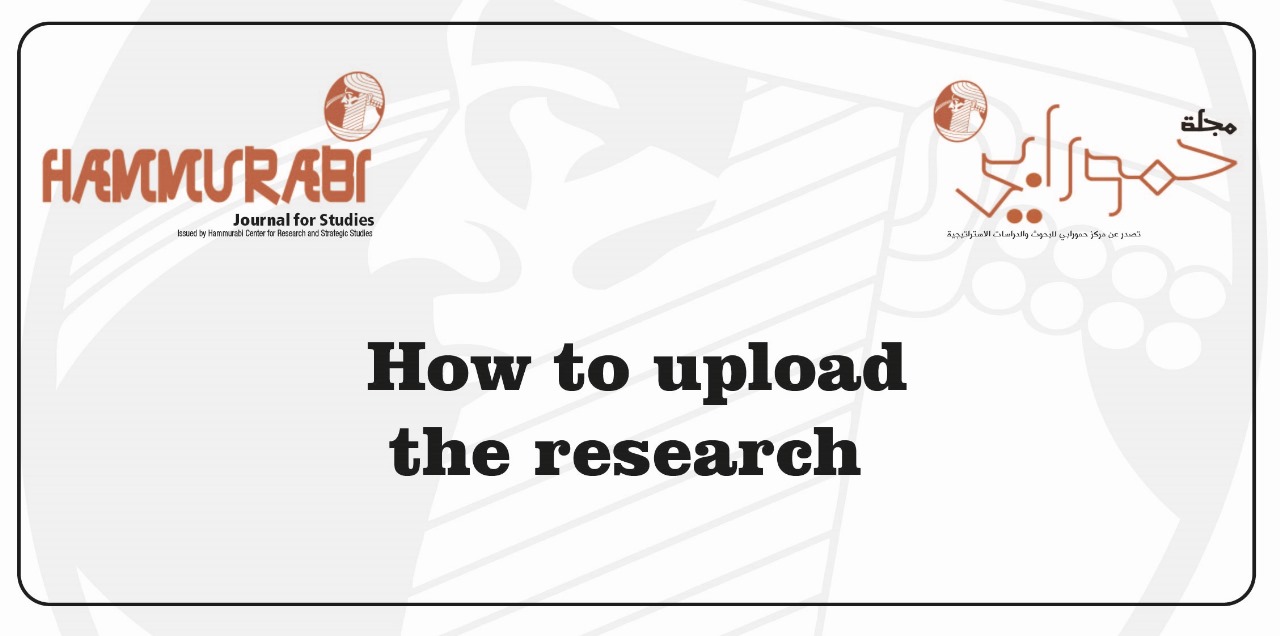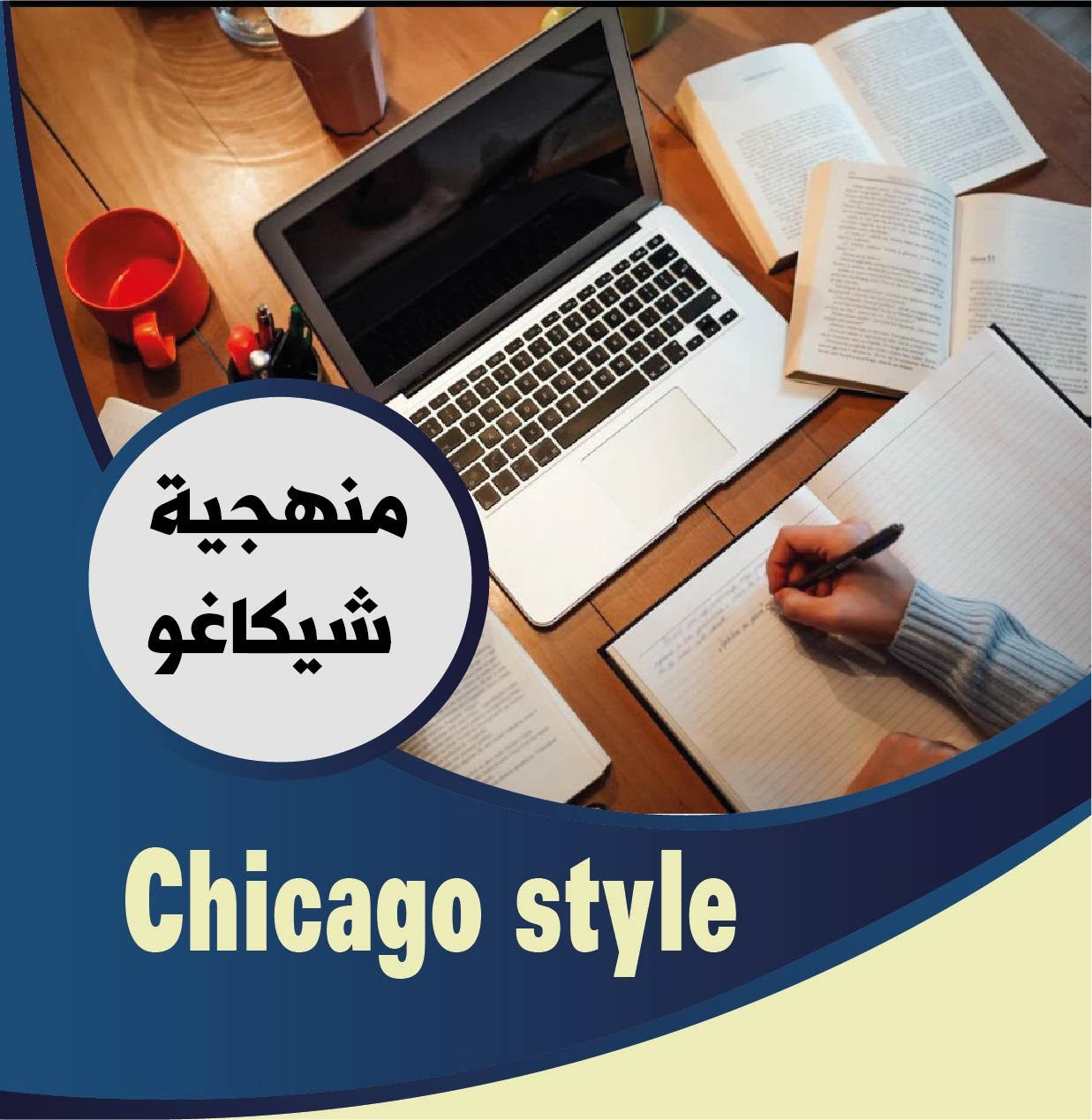Submission Instructions
As part of the submission process, authors must ensure that their submissions comply with all of the following requirements. Submissions that do not meet these guidelines may be returned.
1. The research paper must be submitted to the official website of the journal; no other means of submission will be accepted.
2. The submitted papers must be written in MS Word. Papers printed on tablets will not be accepted. The font should be Sakkal Majalla, size 14, single-spaced. Main headings should be size 16 Bold. Quotes from texts should be in font size 12, with at least a 0.5 cm indentation on both the right and left margins. Papers should be printed on A4 paper with Normal margins.
3. Papers submitted to the journal should be written in either Arabic or English and should not exceed 5000 words.
4. The second page should include an abstract in both Arabic and English, not exceeding 80 words, along with a maximum of five keywords.
5. Research sources must be documented according to the Chicago Manual of Style using the notes and bibliography method. Footnotes or endnotes should be written at the bottom of the page, containing all source information, numbered sequentially within each page margin, and in font size 12. Use Sakkal Majalla for Arabic sources and Times New Roman for English sources. For more details on this method, click here to download the Chicago Manual of Style.
6. Submitted papers should include the author's name, email, specialty, and affiliation in both Arabic and English.
7. The research paper should include a biography of the researcher and their affiliation.
8. The manuscript text adheres to the stylistic and bibliographic requirements outlined in the Submission Instructions , found in the journal's information section on this site.
9. Upon receipt of the research paper, the journal will notify the author of its receipt within 5 working days.
10. The author will be notified of the acceptance or rejection of their paper within two to three months. Accepted papers will be informed of their publication date, and the author will be provided with an acceptance letter.
11. Where applicable, links to references used in the manuscript have been added (links are URLs to web addresses).
12. The paper will be subjected to electronic plagiarism detection.
Citation Methods According to the Chicago Manual of Style:
This system emphasizes the need to record the full details of the source or reference from which the quotation was taken when it is mentioned for the first time. The details should include the author's name, the title of the book, the translator (if any), publication details (total number of volumes, edition number, place of publication, publisher’s name, year of publication), volume number, and page number.
First. When quoting from a book for the first time:
1. Author's name: First name followed by the father's name, then the grandfather's name, followed by a comma (,).
2. Book title: The title of the book should be underlined and not followed by a comma or period (.).
3. Publication details: Placed within parentheses and a comma after the closing parenthesis (----),
(a) Total number of volumes: Followed by a semicolon (;)
(b) Edition number: Followed by a semicolon (;)
(c) Place of publication: Followed by a colon (:)
(d) Publisher’s name: Followed by a comma (,)
(e) Year of publication: Then close the parenthesis
4. Volume number: Followed by a comma (,)
5. Page number(s): Followed by a period (.)
Examples:
- Jamal Hamdan, Geography of Cities (3rd ed.; Cairo: Alam Al-Kutub, n.d.), p. 277.
- Mustafa Murad Al-Dabbagh, Our Country Palestine (Beirut: Dar Al-Taliaa, 1966), Vol. 1, pp. 112, 114.
- Mustafa Murad Al-Dabbagh, Our Country Palestine (Beirut: Dar Al-Taliaa, 1966), Vol. 1, pp. 100-107.
*Second. First-time Citation of an Article from Journals:*
1. *Author's full name*: Followed by a comma (,).
2. *Title of the article*: Enclosed in quotation marks, followed by a comma before the closing quotation mark (“--------,”).
3. *Name of the journal*: Underlined and followed by a comma.
4. *Publication details*: Placed within parentheses and followed by a comma after the closing parenthesis (----),
(a) *Place of publication*: Followed by a colon (:).
(b) *Issuing body*: Followed by a comma (,).
(c) *Volume number*: Followed by a comma (,).
(d) *Issue number*: Followed by a comma (,).
(e) *Month*: Followed by a comma (,).
(f) *Year of publication*: Close the parenthesis.
5. *Page number(s)*: Followed by a period (.).
Example:
- Youssef Abu El-Hajjaj, “The Gaza Strip: Its Conditions and Economic Situations,” Journal of Literature (Cairo University, Issue 19), p. 47.
*Third. Citing a Book with Two or More Authors:*
- If a book has two authors, mention both authors' names.
- If a book has three authors, mention all three authors' names.
- If a book has four or more authors, mention the first author's name followed by the term "and others."
This follows the same system in English, using the term "and others" for four or more authors.
*Fourth. Citing a Book without a Specific Author:*
- If a book is published by an institution and carries the institution's name instead of an author's name, use the institution's name in place of the author's name.
*Fifth. Citing a Book with an Unknown Author:*
- If the author's name is not available, use [unknown author]. If the author's identity can be determined by other means, place the name in square brackets [----].
*Citing a Book without a Date:*
- If the reference has no date, write [date unknown] or [n.d.] in square brackets.
*Sixth. Citing a Chapter in a Book with Multiple Authors:*
- If a book has multiple authors and each chapter has a specific author, cite the chapter by the chapter's author.
Seventh. Citing a Book Translated into Arabic:
The citation should be formatted as follows:
Author's name, book title, translator's name preceded by the word "translation," publication details, and page number.
Example:
Austin Marr, Climate Science, translated by Mohamed Metwally and Ibrahim Zarq (Cairo: Adab Library and Printing House), 57.
Eighth. Citing Academic Theses:
Researcher's name followed by a comma,
Title of the thesis in quotation marks,
Inside parentheses:
The academic degree awarded, followed by a comma,
Whether it is published or unpublished, followed by a comma,
The university where the degree was awarded, followed by a comma,
The year, followed by a comma,
The page number outside the parentheses, followed by a period.
Example:
Saleh Hamad Al-Bahri, "The City of Sanaa - A Study in Urban Geography" (PhD thesis, unpublished, Alexandria University, 1982), p. 57.
Ninth. Citing a Source for the Second Time:
If the citation follows the first citation immediately, write "previous reference, same page: Idem."
If citing the same source for the third time without any intervening citations, write "the same reference."
Important Note: Common Mistakes
A frequent mistake is using "same reference" or "same source" interchangeably. The correct terms are "the same reference" and "the same source."
*Tenth: Citing a Reference Again*
When citing a reference for the second time and there is a gap between citations, use:
- "Previous reference" (without the definite article), or
- "Previously cited reference" (without the definite article).
For instance:
- *"Cit. oper cit."* (Latin: "previously cited reference")
- *"Loco citato"* (Latin: "in the same place")
*Eleventh: Citing Online Sources*
Cite online sources with:
- The name of the website
- The title of the topic
- The date accessed
Example:
http://www.lib.utexas.map.caza91scale 1:150000, accessed April 15, 2000
*Twelfth: Citing Dictionaries, Encyclopedias, and Atlases*
For dictionaries, encyclopedias, and atlases, include:
- The name of the author(s)
- The title of the work
- Publishing details
- Volume and page number
Example:
Al-Zur Kili, Khair al-Din: Al-A'lam; A Dictionary of the Most Famous Arab and Muslim Figures (3rd ed.; Beirut: Dar al-Ilm lil-Mala'een, 1979), Vol. 5, p. 83.
*Thirteenth: If the Encyclopedia Contains Research Articles*
If the encyclopedia consists of research articles with individual authors, cite each article separately:
Example:
Tarabin, Ahmad: "Palestine under the Mandate," The Palestinian Encyclopedia (Vol. 2; Part 1; Beirut: 1991), Vol. 2, p. 995.
*Fourteenth: If the Encyclopedia Does Not List Contributors*
If the encyclopedia does not list individual contributors, cite it with the name of the supervising body:
Example:
The Palestinian Encyclopedia Committee, The Palestinian Encyclopedia (Vol. 1, Part 1; Damascus: 1984), Vol. 3, p. 223.
*Fifteenth: Citing Newspapers and Magazines*
If the article has a specific author:
- Author's name
- Title of the article
- Name of the newspaper
- Place of publication
- Issue number
- Date of issue
- Page number
If no specific author is available or if citing a news item rather than an article:
- Name of the newspaper
- Place of publication
- Issue number
- Date of issue
- Page number
Note: The same citation format applies to foreign press.










